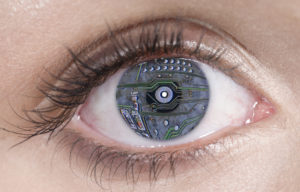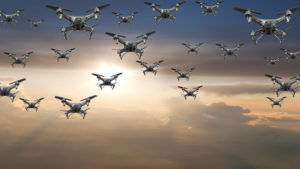Expert guide: Everything you need to know about investing in drone stocks

Pic: Thinkhubstudio / iStock / Getty Images Plus via Getty Images
The ASX features a number of stocks that offer drone-related technology including Department 13, Droneshield and IOT Group. Canary Capital’s Martin Duriska explains the commercial potential.
What is driving growth in the drone market?
There are two main markets – consumer (toys, hobby photos, video etc) and commercial (surveying, mapping, delivery, pro imagery).
The consumer market has been driven by novelty, mainly through photo and video capability. It’s driven by want as opposed to necessity.
In contrast, the commercial market is likely to exhibit strong near-exponential growth from multiple sectors and applications.
Unlike consumer drones, commercial growth will be further enhanced by expansion into new sectors exploring drones as solutions.
Concurrent to this will be increased regulatory oversight on the use of drones in public airspace, providing further opportunities for ancillary system providers to benefit from regulation.
Where are the opportunities?
Opportunities lie not in the manufacture of drones themselves — it’s a saturated market full of hundreds of manufacturers servicing various industries and applications – but in the ancillary systems and drone mitigation space.
There is widespread agreement that commercial drones will see exponential growth in the coming years.
For broad community and regulatory acceptance of drones as day-to-day commercial appliances there needs to be thorough safety and threat mitigation systems in place.
There will undoubtedly be strict government-imposed requirements and standards on commercial drones operating in public spaces. Component makers who supply drone safety or mitigation systems will become key players.
While there are several sub-groups of ancillary systems for drones (such as cameras, propulsion, batteries, data and navigation), these are all application-specific.
Drone safety systems and counter drone measures are agnostic to the application. All drones will need to be safe and drone defence systems will need to protect against all drones.
What do you predict for the future?
Drones, in a wide variety of commercial applications, are undoubtedly an emerging market.
While popular media has focused on drone delivery services (such as Dominos Pizza and Amazon) the reality is drone delivery is only a small fraction of the market.
Many sectors, from mining and utilities to media and research are increasing their use of drones to carry out high-end tasks. The sheer number of industries beginning to use drones suggests widespread adoption is inevitable.
What listed drone companies do you like?
Department 13 (ASX:D13) – Market cap: $40m, Share Price 7.4c
Department 13 makes counter drone technology. Their flagship product MESMER can detect, identify and assume control of unauthorised drones in a defined airspace. The MESMER solution can be deployed in a mobile or fixed location.
The target market is public and private sectors. Fixed MESMER systems can protect buildings and assets, while mobile systems can be deployed at events such as concerts and sporting events.
Department 13 has been involved in multiple trials and demonstrations with government organisations such as the US Department of Defence and US Marine Corps.
ParaZero (ASX:PRZ) – Proposed listing May/June 2018 at 20c. Market Cap: $17.5m
Full commercial operation of drones over populated areas will never materialise without a regulator-approved safety solution. Parazero is a leader in this market with smart sensing, best-in-class low-altitude deployment and drone management capabilities.
ParaZero should see significant upside as regulatory bodies inevitably impose strict safety requirements on drones.
The ParaZero parachute and flight data recording system can be fitted to most drone models and have already gained a good foothold in the industry, despite very limited regulatory requirements at this point.
Not only is the safety of onlookers paramount when operating a drone, but drone operators will be wanting to protect their commercial drone investment, which can be up to several $100k per drone. Asset protection should be another factor in demand for ParaZero type safety systems.
(I hold PZR).
Mobilicom (ASX:MOB) – Market Cap: $14m, share price 6.5c
Mobilicom delivers mobile private network solutions for robotics, drones and mission critical applications, without the need for any existing infrastructure.
Mobilicom Lts operate two businesses; Mobilicom which services the Government sector and Sky Hopper which services the Commercial and Industrial sectors. The Sky Hopper should benefit from the growth in drones as they are progressively achieving design wins with large commercial drone manufacturers.
Designs wins result in the Sky hopper solution being included in the construction of drones by the partnered manufacturer and result in direct revenue to Mobilicom.
Mobilicom have displayed a slow increase in revenue over the last 12 months but have also worked to reduce costs. Although not cashflow positive currently, the increased uptake of Mobilicon products within the drone space suggests this milestone may be achieved in the next 12-18 months.
(I hold MOB).
Martin Duriska holds shares in ParaZero and Mobilicom.
Mr Duriska is a trade analyst at Canary Capital, a boutique corporate advisor and broker specialising in micro and small cap stocks.
Before joining Canary, he was research scientist focussing on new high-tech materials. Over the last 10 years Martin has been actively involved in investing and trading in small cap ASX stocks. Martin brings a unique take on stock analysis, drawing on his scientific knowledge and evaluation methods.
This article does not constitute financial product advice. You should consider obtaining independent advice before making any financial decisions.
UNLOCK INSIGHTS
Discover the untold stories of emerging ASX stocks.
Daily news and expert analysis, it's free to subscribe.
By proceeding, you confirm you understand that we handle personal information in accordance with our Privacy Policy.








